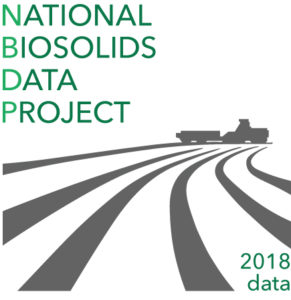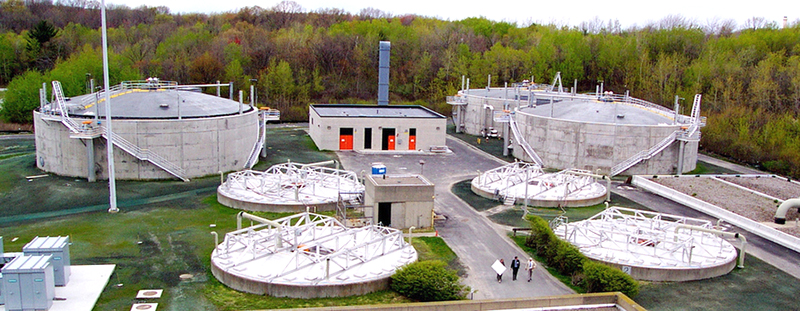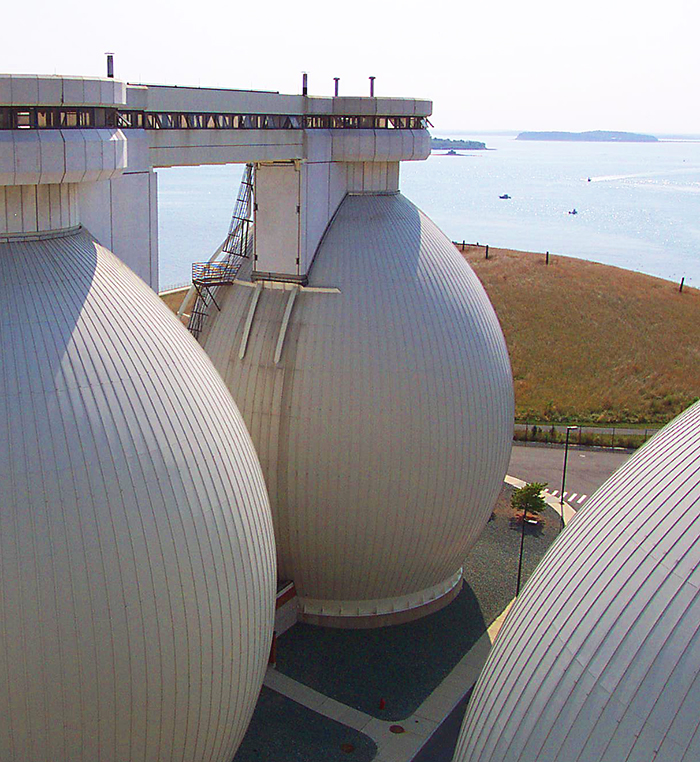Ned Beecher
 “Where have all the biosolids gone, long time passing? Where have all the biosolids gone, long time ago?” (a nod to Pete Seeger). That’s the question being answered by the second National Biosolids Data Project. In 2007, the North East Biosolids & Residuals Association (NEBRA), BioCycle, NW Biosolids, and Greg Kester, then with the Wisconsin Department of Natural Resources and now with the California Association of Sanitation Agencies (CASA), completed the first comprehensive collection of data on biosolids use and disposal in the U. S., publishing state-by-state reports and a national summary.
“Where have all the biosolids gone, long time passing? Where have all the biosolids gone, long time ago?” (a nod to Pete Seeger). That’s the question being answered by the second National Biosolids Data Project. In 2007, the North East Biosolids & Residuals Association (NEBRA), BioCycle, NW Biosolids, and Greg Kester, then with the Wisconsin Department of Natural Resources and now with the California Association of Sanitation Agencies (CASA), completed the first comprehensive collection of data on biosolids use and disposal in the U. S., publishing state-by-state reports and a national summary.
The same team is at it again, with the addition of the Mid-Atlantic Biosolids Association (MABA) and help from other biosolids groups and state committees. The “long time ago” is 2018 — that’s the data year for this second major national survey. The goal is to provide a robust set of data from one year — a snapshot — of how wastewater solids (sewage sludges) are treated, regulated, beneficially used, and/or disposed of in every U.S. state and territory. Notes Kester, CASA’s Director of Renewable Resource Programs, “we as a profession are weakened without data about what we do.”
Laying The Survey Groundwork
Preparations for the current survey began more than a year ago, with support from a cooperative agreement provided through U. S. EPA Region 4. The purpose of that project, completed in May 2020, was to identify all existing national biosolids management data and develop the process (methodology) to collect 2018 data. All existing biosolids management data were compiled in a Literature Review, which assessed the degree of comprehensiveness of the data sets. The data collection since the first National Biosolids Regulation, Quality, End Use and Disposal Survey report of 2007 have all been closely focused on specific aspects of biosolids management (e.g. composting or anaerobic digestion) or have been regional — and only in a few regions.

Greater Lawrence Sanitary District’s wastewater treatment plant in North Andover, Massachusetts. Photos courtesy of NEBRA
Working with the same team (NEBRA, BioCycle, NW Biosolids, CASA), along with an Advisory Group and assistance from Tim Seiple, Pacific Northwest National Laboratories, two survey tools were developed and tested: one to collect state biosolids management data, and a second to collect data directly from municipal wastewater treatment plants (WWTPs). When developing the survey tools, the project team utilized the literature review of existing biosolids data sets — including the critical data gaps identified — to update and/or revise data fields used in the 2007 survey.
The current survey (2018 data) developed under the EPA grant includes the same categories of data fields as were in the survey of 2004 data: Wastewater treatment and biosolids infrastructure; biosolids quantity; biosolids end use and disposal/resource recovery data; biosolids quality data; biosolids treatment practices; biosolids and septage regulation and permitting; and trends in biosolids management. Two additional categories of data fields were added for the survey of 2018 data: Biosolids-related energy data and Biosolids-related economic data. These two topics were not covered in the original survey.
Since then, there has been a surge of interest in renewable energy generation and energy efficiency at WWTPs. More recently — as discussed and cited in the Literature Review — surveys have been conducted to collect data on renewable energy generation at WWTPs, especially as related to codigestion. The state and WWTP surveys for the pilot test of the survey tools included some of the same questions (data fields) as those prior surveys along with new ones developed by the current project team and Advisors.
Additionally, the project team found a distinct void in data related to the economics of biosolids management. There was consensus among the project team and Advisors that the 2nd National Biosolids Survey (collecting 2018 data) should include data fields related to economics — including tipping fees paid for end use and disposal, tipping fees collected for receiving outside wastes, transport distances to end use and disposal sites, and the per-ton and total costs to manage biosolids. Numerous biosolids management professionals seek economic data, as do technology vendors and other private company stakeholders, researchers, and those developing policy. The viability of policies, systems, and technologies requires understanding of markets and money in the biosolids management space. While one-off, separate biosolids market and biosolids technology analyses are common, no one is tracking key metrics of economic activity and impacts in the biosolids management sector nationwide.
In spring 2020, the final pilot surveys were tested by three states and five WWTPs. Responses, or the lack thereof, were used to tweak the survey tools being used in the current National Biosolids Data Project. There are many nuances in how data are to be interpreted. And there are many challenges in trying to integrate the wide variety of solids treatment and management practices into consistent, comparable data sets.
Survey Launch, Call For WWTP Respondents
The second National Biosolids Data Project is funded with leadership from the National Association of Clean Water Agencies (NACWA) and the Water Environment Federation (WEF). Other funders include large leading public WRRF biosolids programs, private biosolids management companies, consulting engineering firms, and nonprofit associations. “This is a remarkable, nationwide group effort,” notes Janine Burke-Wells, NEBRA’s Executive Director. “We are so grateful for the enthusiastic support from these leading biosolids stakeholders. We’re working hard to make sure we meet their highest expectations for this project.”
Data collection from state programs began in the fall of 2020. As was done for the 2007 survey, the project team is relying on the expertise of state biosolids coordinators to provide the bulk of data on the regulation, quality, and end use or disposal of biosolids in their states. These coordinators tend to have many responsibilities above and beyond biosolids, and the past year has been especially trying, with stretched budgets and difficult work situations due to the pandemic. “Despite all the challenges they face, we’ve had incredible help from many state coordinators already,” adds Burke-Wells. “I’m really excited about the quality of data and the summary reports that they have helped us put together for many states.”
On January 7, the second part of the survey project was launched — an online survey to be completed by biosolids programs at WWTPs (aka water resource recovery facilities, WRRFs). It can be accessed from the project website and is for “Treatment Works Treating Domestic Sewage,” as EPA calls them, which include POTWs (publicly-owned treatment works), or, in general parlance, municipal (not industrial) WWTPs. The goal is to have at least 1,500 of these facilities complete the survey, with balanced representation in every state and territory. “Ideally, we will collect data representing 70% of the domestic wastewater flow in every state and territory,” explains Nora Goldstein of BioCycle. “It’s an ambitious goal, but we’d love to exceed it! This is the one biosolids survey for this decade, so we hope every WWTP will participate.”
The project team is already designing a special stand-alone website on which the compiled data will be made available free to the biosolids profession and the public. There will be state-by-state summary reports, spreadsheets of data, and interactive visualization graphics providing insights into various aspects of the information collected. The intent is to provide a sustainable repository of biosolids data for years to come, for professionals to access and build on. Rollout of the new biosolids data website — with initial information, such as summary reports and spreadsheets from a limited number of states — is planned for late February.
Burke-Wells summarizes the need for these data: “With all the stressors on solids management, increasing costs and regulations, it is more important than ever to have good data to use to support smart biosolids management activities and policies.”
Donations for the state and WWTP survey projects are still being accepted. Access project updates on the project website.
Ned Beecher is Special Projects Manager at the Northeast Biosolids & Residuals Association and project lead for the national survey initiative.











